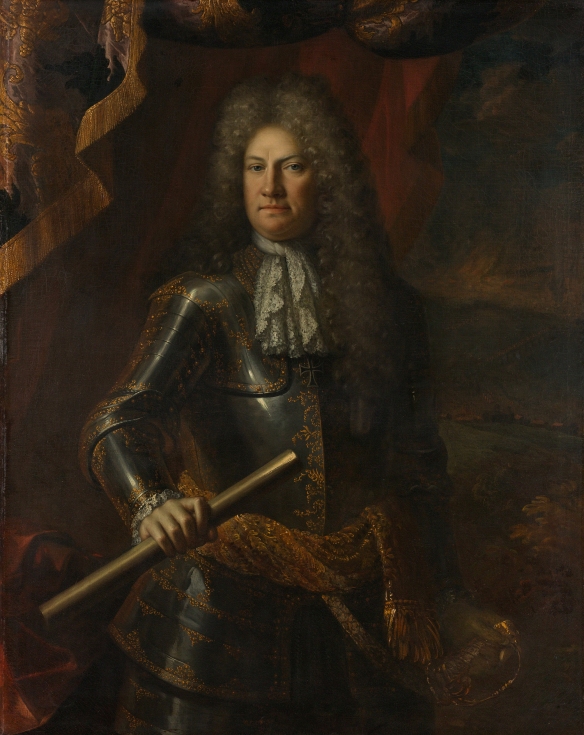Dutch Infantry 1701-1713.
Control of the Dutch Army, or “Army of the Generality” of the United Provinces, as it was formally known during this period, initially lay with the Regents of the States of Holland, most notably Jan de Witt. Later, this control shifted to William III, and still later to Marlborough, though the Regents never surrendered their power over the Army’s purse. This powerful lever gave the Regents of Holland effective control of wider Dutch politics and foreign and military policy. Command of the Army was an endless source of political conflict between dynasts and the merchant elite. Orangists sought always to secure command for sons of the House of Orange, while the republican, or States’ party, faction was equally determined to deny command to Princes of Orange, even if that meant granting it to a foreign general. French maréchal Turenne and General Wrangel of Sweden were both proposed, and Marlborough was ultimately accepted. The Army was woefully unprepared for the start of the Dutch War (1672-1678). In the actual fighting against French invaders, badly beaten Dutch troops had to be rescued by town militia, including many women, who stiffened the resistance. Within two years the Army recovered, and thereafter maintained a high level of professionalism and proficiency. The Dutch Army also increased greatly in size, reaching 100,000 men by 1675. Under William III (then still Prince of Orange), many of its officers were German nobles, as William found these easier to influence and control than Dutch officers. With the return of peace in the late 1680s the Army was temporarily reduced to 40,000 men. Its numbers rose commensurately with the threat from France from 1688 onward, swelling throughout the Nine Years’War (1688-1697). It formed the core of William’s force for the invasion of England in 1688 (though many mercenaries accompanied him as well). Some 17,000 Dutch regulars remained there, or fought in Ireland, until 1691. It reached its peak strength of 119,000 men in 1708, compared to just 70,000 British soldiers on the continent that year. This Dutch force was importantly supplemented by another 42,000 Germans and Swiss hired with Dutch taxes and acting under Dutch command. During the War of the Spanish Succession (1701-1714), Dutch forces agreed to serve under overall command of Marlborough, although he was not permitted to move or commit the Army to battle without prior consent of the States General, which was represented in the field by several Dutch sub-commanders. Troop numbers were reduced from 130,000 (including foreigners) in 1712 to 90,000 in 1713 and just 40,000 in 1715, with the latter force an admixture of Dutch, Swiss, and Scots. In 1717 the Army was reduced by another 6,000 men to a standing force of 34,000.
Godard van Reede, 1st Earl of Athlone (1644-1703).
Dutch general. Having served in the several wars of the United Provinces against Louis XIV, including the Nine Years’ War (1688-1697), Athlone sailed with William III for England during the Glorious Revolution. He was most effective fighting Jacobites and the French expeditionary force in Ireland after the Boyne (July 1/11, 1690). In 1691 he captured the town of Athlone, in whose name he was later ennobled. He commanded well and won at Aughrim (July 12/22, 1691), where he inflicted enemy casualties at a rate ten times his own (7,000 to just 700). That forced the remnants of the Irish and French armies to retreat to Limerick. He took the fortress city in October 1692, after a lengthy siege. Athlone then left for the Netherlands and the war against France. He fought at Steenkerke (July 24/ August 3, 1692) and the siege of Namur (July 2-September 1, 1695). He might have commanded the Dutch Army during the first years of the War of the Spanish Succession (1701-1714), but instead magnanimously deferred to Marlborough, whom he served as loyal lieutenant.
